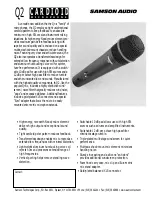
Figure 8 below, shows that it would actually take 12 conventional cardioid mi
-
crophones to provide the same coverage as 3 Earthworks cardioid microphones,
when placed 3 feet in front of the choir.
Three characteristics of Earthworks microphones will provide more gain before
feedback: (1) Smooth off-axis response, (2) picking up far less sound from the rear
of the microphone and (3) wider usable polar-response that allows microphones
to be placed closer to the source. Each of these characteristics will provide more
gain before feedback, however, when you have all 3 it is somewhat remarkable.
The near-perfect polar response provides a smooth off-axis response in addition to
a much wider pick-up pattern with the full frequency response of the microphone.
With a wider pick-up pattern, the microphone can be moved closer to the source
(in this case singers) and obtain even more gain before feedback.
Spotlighting
Conventional microphones typically have problems with highlighting or spotlight-
ing when used on choirs. This is caused by the significant changes in frequency
response of sounds that are picked up off-axis. This phenomenon will cause sing-
ers in a given frequency range to sound louder than others not in that frequency
range. This causes certain singers to stick out above the rest making it difficult
to achieve a good balance between all of the voices in the choir. In contrast, the
uniform off-axis response of Earthworks microphones greatly reduces this phe-
nomenon allowing a uniform balance of choir voices to be achieved much easier.
Rejection of Sounds Behind the Microphone
A textbook perfect cardioid microphone will pick up sounds uniformly at the
front and sides of the microphone. However, the level (in dB) on the sides of
the microphone will be slightly less (as much as 6dB). Even though the level
at the sides of the microphone may be lower, the frequency response should
remain uniform (i.e. no loss of high frequencies). The textbook perfect cardioid
microphone is very dead at the rear of the microphone. The polar response of a
perfect cardioid microphone is shown in Figure 9a. Notice that at 180 degrees
the level is down 30 dB or more.
Figure 8.
An 80-voice choir miked with 12 conventional microphones at 3 feet
6
Figure 7.
An 80-voice choir miked with 6 conventional microphones at 3 feet
Closer Miking Provides Additional Gain Before Feedback
Seasoned sound engineers know that placing a microphone closer to the sound
source will result in additional gain before feedback. Figure 6 below, shows the
same 80-voice choir miked with 3 Earthworks cardioid microphones, however,
notice that the microphones are placed 3 feet in front of the choir rather than
at 6 feet as indicated in Figures 4 and 5.
In contrast, Figure 7 shows the same choir miked with 6 conventional cardioid
microphones placed 3 feet in front of the choir. Notice the blank coverage spots
in the pick-up area. This illustrates that placing conventional microphones 3
feet in front of the choir would require even more microphones to adequately
cover the choir.
Figure 5.
An 80-voice choir miked with 3 Earthworks microphones at 6 feet
Figure 6.
An 80-voice choir miked with 3 Earthworks microphones at 3 feet
5




























